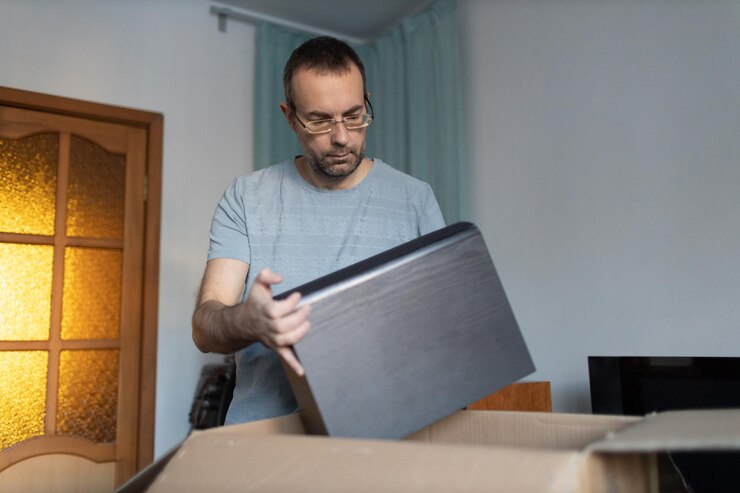The time your smartphone keeps reminding you that you are running out of storage space it might be annoying. Fix Storage Space Running Out Without Rooting A Complete Guide. That dreadful notice has the potential to slow down your device, prevent app updates, block downloads, and ruin your experience. Although rooting may provide more control over storage, some people are uncomfortable going that path because of the possibility of bricked phones or void warranties.
Thankfully, reclaiming your space doesn’t require root access. This thorough article explains how to resolve “Storage Space Running Out” problems without rooting your device in a safe, efficient, and realistic manner.
Reasons for Observing Storage Space Running Out Caution
Understanding the root cause of this problem is helpful before attempting to repair it. Usually, the alert shows up when your internal storage is about full.
- Remaining files and caches
- Caches and residual files
- Unused apps and games
- Large media files (photos, videos, audio)
App data and downloads - OS updates and system files
Many users assume that deleting a few files or apps is enough. But often, storage problems require a deeper cleanup strategy.
Check What’s Taking Up Space

Start by understanding what’s eating your storage:
On Android
- Go to Settings > Storage.
- Check the breakdown: Apps, Images, Videos, Audio, Cache, Misc, etc.
This overview helps you target the largest space hogs.
On Samsung
- Navigate to Device Care > Storage for a more refined breakdown and cleanup suggestions.
Clear App Cache and Data
Many apps store temporary files called cache. Over time, this data can pile up.
For clear app cache
- Go to Settings > Apps.
- Select an app (e.g., Instagram or Chrome).
- Tap Storage > Clear Cache.
Do this for large apps like:
- Facebook
- Chrome
- Instagram
- TikTok
- YouTube
Tip: Avoid tapping “Clear Data” unless you’re okay with losing local settings or logins.
Use Files by Google
Google’s own Files app suggests what to clear, including:
- Junk files
- Duplicate files
- Temporary app files
It’s safe, user-friendly, and great for beginners.
Uninstall Unused Apps
Many apps run in the background and use space even when you’re not using them.
Identify and remove
- Old games you no longer play
- Apps you’ve only used once
- Trial apps from earlier installations
You can uninstall apps directly from:
Settings > Apps > App Name > Uninstall
Alternatively long press the app icon and drag it to the uninstall option.
Move Photos and Videos to Cloud Storage

Media files are often the biggest culprits when it comes to storage bloat.If you take a lot of photos or record HD videos your gallery can eat up gigabytes in no time.
Free up space by using cloud services
- Google Photos: Offers 15GB free with your Google account.
- OneDrive: 5GB free from Microsoft.
- Dropbox: 2GB free initially.
To use Google Photos
- Install the Google Photos app.
- Enable Backup & Sync.
- After backup, go to Photos Settings > Free up space to delete local copies.
Delete Old Downloads and Documents
The Downloads folder often becomes a graveyard for forgotten files like PDFs, APK and ZIPs.
Steps:
- Open the File Manager or Files by Google.
- Navigate to Downloads.
- Select and delete files you no longer need.
Also check folders like:
- WhatsApp > Media
- Telegram > Downloads
- DCIM > Screenshots
Transfer Files to SD Card (If Supported)
If your phone supports a microSD card, consider moving files there.
you can move
- Photos and videos
- Documents and PDFs
- Music files
- Some app data (if allowed by the app)
For move files
- Open File Manager.
- Select the files.
- Choose Move > Select SD Card > Choose folder.
Note: Some apps also allow moving the app itself to the SD card from the Apps > Storage > Change option.
Use Lite Versions of Apps
Many popular apps offer lighter versions designed for devices with limited storage.
Examples
- Facebook → Facebook Lite
- Messenger → Messenger Lite
- TikTok → TikTok Lite
- Google → Google Go
- YouTube → YouTube Go
These apps take up significantly less space and often use less data and battery too.
Manage WhatsApp Media Storage
WhatsApp automatically downloads every photo, video, and voice message you receive. This adds up quickly.
Limit auto-download
- Go to WhatsApp Settings > Storage and data > Media auto-download.
- Disable auto-download for mobile data and Wi-Fi.
Clear unnecessary WhatsApp media:
- Go to WhatsApp > Settings > Storage and Data > Manage Storage.
- Delete large files or chats with many attachments.
Disable or Remove Bloatware (Without Root)
Most smartphones come with pre-installed apps (bloatware) that you can’t uninstall easily. However, you can disable them:
Steps
- Go to Settings > Apps.
- Tap the unwanted system app.
- Choose Disable.
This doesn’t remove the app but stops it from running or updating and reduces storage impact.
Tip: Apps like Samsung Internet, AR Zone, or Tips can often be disabled.
Use Cleaner Apps Wisely
Cleaner apps promise miracles but not all are helpful. Some are ad-heavy or even fake.
Safe and trusted options
- Files by Google
- CCleaner
- SD Maid (non-root features)
Avoid apps that claim to “boost RAM” or offer aggressive background cleaning — Android already manages RAM efficiently.
Archive Old Chats or Messages
Text messages, especially those with attachments, can pile up.
Options
- Delete old SMS threads.
- Clear chat history from apps like Signal, Telegram, and WhatsApp.
- Use auto-archive or auto-delete settings where available.
Disable Automatic App Updates (Temporarily)
App updates often require temporary storage. If your device is running low, update apps one at a time manually.
Disable auto-update
- Open Google Play Store.
- Tap Profile Icon > Settings > Network Preferences > Auto-update apps.
- Set to Don’t auto-update apps.
Once you free up space, re-enable updates.
Clear Temporary and Residual Files
Even after uninstalling apps, leftover files may linger.
Use:
- Files by Google > Junk Cleanup
- SD Maid (without root) to clean residual data
Manual method:
- Go to File Manager.
- Navigate to Android > Data and Android > OBB.
- Check for folders from deleted apps and remove them if unused.
Caution: Only delete files you’re confident are unnecessary.
Factory Reset (Last Resort)
If all else fails, a factory reset can give you a fresh start.
Steps before resetting
- Backup your photos, videos, contacts, and app data.
- Sync to cloud or SD card.
For reset
- Go to Settings > System > Reset Options.
- Tap Erase all data (factory reset).
Warning: This will wipe everything. Only proceed if other methods fail.
Use Adoptable Storage Feature (For Phones That Support It)
Some Android phones offer a feature called Adoptable Storage which allows you to use an SD card as internal storage.This can dramatically expand your phone’s usable space without rooting.
it works
When enabled, the SD card is formatted to act like part of your internal memory. Apps, photos, and even system data can be stored on it.
For enable
- Insert a high-speed Class 10 or UHS SD card.
- Go to Settings > Storage.
- Tap the SD card > Storage Settings > Format as Internal.
- Follow the on-screen instructions.
Preventive Tips to Avoid Running Out of Storage Again
- Review storage monthly using the built-in storage analyzer or Files by Google.
- Set WhatsApp and Telegram to manual media downloads.
- Avoid hoarding large games unless actively used.
- Regularly back up photos and videos to the cloud.
- Use lite apps or web versions when possible.
- Delete old screenshots and memes that accumulate silently.
Conclusion
Running out of storage doesn’t mean you have to root your phone or buy a new one.With these safe and effective steps you can recover space, improve performance and prevent the issue from coming back. Whether you choose to clear cache, remove unused apps, move media to the cloud, or use lite app versions, there are plenty of options that work no root required.
Take a few minutes to review your storage today and start fresh. Your phone will thank you with smoother performance and fewer annoying notifications.

